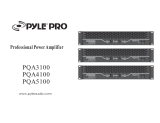
MC68336/376 ELECTRICAL CHARACTERISTICS MOTOROLA
USER’S MANUAL Rev. 15 Oct 2000 A-5
15
RAM Standby Voltage
7
Specified V
DD
applied
V
DD
= V
SS
V
SB
0.0
3.0
5.25
5.25
V
16
RAM Standby Current
55
,
77
,
8
Normal RAM operationV
DD
> V
SB
– 0.5 V
Transient condition V
SB
– 0.5 V ≥ V
DD
≥ V
SS
+
0.5 V
Standby operation V
DD
< V
SS
+
0.5 V
I
SB
—
—
—
10
3
100
µA
mA
µA
17A
MC68336 Power Dissipation
9
P
D
— 756 mW
17B
MC68376 Power Dissipation
9
P
D
— 809 mW
18
Input Capacitance
22
,
10
All input-only pins
All input/output pins
C
in
—
—
10
20
pF
19
Load Capacitance
22
Group 1 I/O Pins and CLKOUT, FREEZE/QUOT, IPIPE
Group 2 I/O Pins and CSBOOT, BG/CS
Group 3 I/O pins
Group 4 I/O pins
C
L
—
—
—
—
90
100
130
200
pF
NOTES:
1. Applies to :
Port E[7:4] — SIZ[1:0], AS
, DS
Port F[7:0] — IRQ[7:1], MODCLK
Port QS[7:0] — TXD, PCS[3:1], PCS0/SS
, SCK, MOSI, MISO
TPUCH[15:0], T2CLK, CPWM[8:5], CTD[4:3], CTD[10:9], CTM2C
BKPT
/DSCLK, IFETCH, RESET, RXD, TSTME/TSC
EXTAL (when PLL enabled)
2. Input-Only Pins: EXTAL, TSTME
/TSC, BKPT, PAI, T2CLK, RXD, CTM2C
Output-Only Pins: CSBOOT
, BG/CS, CLKOUT, FREEZE/QUOT, IPIPE
Input/Output Pins:
Group 1: DATA[15:0], IFETCH
, TPUCH[15:0], CPWM[8:5], CTD[4:3], CTD[10:9]
Group 2: Port C[6:0] — ADDR[22:19]/CS[9:6]
, FC[2:0]/CS[5:3]
Port E[7:0] — SIZ[1:0], AS
, DS, AVEC, RMC, DSACK[1:0]
Port F[7:0] — IRQ[7:1], MODCLK
Port QS[7:3] — TXD, PCS[3:1], PCS0/SS
ADDR23/CS10/ECLK, ADDR[18:0], R/W, BERR, BR/CS0, BGACK/CS2
Group 3: HALT, RESET
Group 4: MISO, MOSI, SCK
Pin groups do not include QADC pins. See Tables A-11 through A-14 for information concerning the QADC.
3. Does not apply to HALT
and RESET because they are open drain pins. Does not apply to port QS[7:0] (TXD,
PCS[3:1], PCS0/SS
, SCK, MOSI, MISO) in wired-OR mode.
4. Use of an active pulldown device is recommended.
5. Total operating current is the sum of the appropriate I
DD
, I
DDSYN
, and I
SB
values. I
DD
values include supply
currents for device modules powered by V
DDE
and V
DDI
pins.
6. Current measured at maximum system clock frequency, all modules active.
7. The SRAM module will not switch into standby mode as long as V
SB
does not exceed V
DD
by more than 0.5
volts. The SRAM array cannot be accessed while the module is in standby mode.
8. When V
DD
is transitioning during power-up or power down sequence, and V
SB
is applied, current flows between
the V
STBY
and V
DD
pins, which causes standby current to increase toward the maximum transient condition
specification. System noise on the V
DD
and V
STBY
pins can contribute to this condition.
9. Power dissipation measured at system clock frequency, all modules active. Power dissipation can be calculated
using the following expression:
P
D
= Maximum V
DD
(Run I
DD
+ I
DDSYN
+ I
SB
) + Maximum V
DDA
(I
DDA
)
10. This parameter is periodically sampled rather than 100% tested.
Table A-5 DC Characteristics (Continued)
(V
DD
and V
DDSYN
= 5.0 Vdc ±5%, V
SS
= 0 Vdc, T
A
= T
L
to T
H
)
Num Characteristic Symbol Min Max Unit
Frees
cale Semiconductor,
I
Freescale Semiconductor, Inc.
For More Information On This Product,
Go to: www.freescale.com
nc...






















